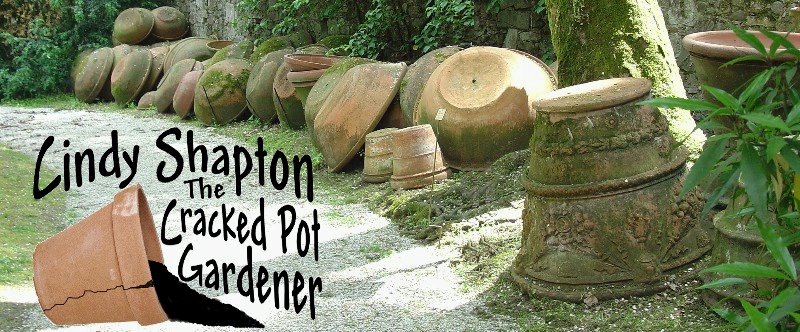
I just celebrated 30 years of marriage to a man who isn’t crazy about gardening but thankfully he is crazy about me – (right honey?)
Our children threw us a surprise party and we didn’t have a clue. They recreated the cake (smaller version of course) and had to hunt for the ‘earth tone’ straw flowers that were on the original.
It was the seventies after all and I guess I was a naturalist even back then. Besides my mother traded the neighbor lady who raised and sold flowers a few loads of manure for the flowers for my wedding!
My husband surprised me (yes another one) with a couple of days away to the Blue Water Mountain Lodge in the mountains of NC. (Robbinsville) http://www.bluewatersmtnl.com/We sat on the porch reading while enjoying the view of Lake Santeetlah and the mountain range beyond.
We canoed Santeetlah Lake and hiked the trails at Joyce Kilmer memorial forest. Ginormous trees (mostly virgin Tulip poplar and Hemlocks)…some of which are 450 years old. We trekked quietly among the giants awed by the beauty of moss, bark, ferns and wildflowers at each turn. It was hard to travel fast because you had to look way up and then down to the ground so as not to miss anything.
Joyce Kilmer, poet, who was killed in WW1 wrote this famous poem that we have all heard…
Trees

I think that I shall never see
A poem lovely as a tree.
A tree whose hungry mouth is prest
Against the earth’s sweet flowing breast.
A tree that looks at God all day
And lifts her leafy arms to pray.
A tree that may in summer wear
A nest of robins in her hair.
Upon whose bosom snow has lain.
Who intimately lives with rain.
Poems are made by fools like me,
But only god can make a tree.
As we made our way through the forrest I wished I had brought a wildflower book with me…note to self for next hiking adventure. I did recognize several wildflowers/herbs and the like. I can only imagine what it would be like to take this same trail in the spring! Here is a sampling of the plants we saw:
Heal All, an herb introduced from Europe and now grows everywhere the soil has been disturbed (including my garden). A great ground cover that naturalizes quickly with violet blooms May through September. Once brewed as a tea to treat sore throats, mouth sores, fever and diarrhea. Salves were made to heal wounds, bruises and other skin ailments.
Jewelweed or touch-me-not, is one of my favorite plants found in moist shady sites in woods and along streams. Makes a great salve for poison ivy or chigger bites – stops the itch! The orangish flowers bloom July until frost. The green seed capsules burst when mature, probably explains why they come up everywhere in my garden…
Wild Hydrangeas were just past their bloom prime but grew in mass along the trails. This plant was used in herbal medicine as a diuretic, purgative and tonic. The Cherokee used it to treat kidney stones.
Black Cohosh was in bloom along the trail. At first I thought it couldn’t be because the Black cohosh I have in my garden blooms early summer. I checked it out when I got home and found that there is a variety that blooms July-September.
Partridgeberry creped over the banks along the trail and still had red berries that the birds had not yet found. An herb taken before childbirth as well as used as a diuretic and an overall tonic. The berries are edible and thought to be a favorite food of partridges.
We took the convertible so the fun with plants just never stopped. I spotted these wild plants as we drove slowly along the winding, curvy back roads…what can I say? Some people read road signs and look for fauna, I look for flora and admire (and critique) folks’ landscape and choice of yard art. Yes, it is a full time job but someone has to do it!
Mountain Mint, a fragrant plant that always looked as if it has been dusted with flour was growing happily on a bank a winding road. Dr. James Duke, in his book "The Green Pharmacy" suggests rubbing this plant on skin to discourage chiggers.
Wild potato vine – I always think they are morning glories – well they are in the same family – white blossoms with pinkish, red centers. The edible roots were eaten by the Native Americans.
Joe-Pye Weed was in perfect form growing along the roadways – I need to try growing this in my garden again. For a plant with weed in the title, seems like it would be easy to grow…hmm
Iron Weed was just coming into bloom in the fields, a deep purple and welcome site in the dog days of summer when most flowering plants are looking a bit tired.
As we crossed back into the great state of Tennessee I saw the bright orange of Trumpet Vine growing on a fence line. A favorite of hummingbirds and possibly UT fans!

